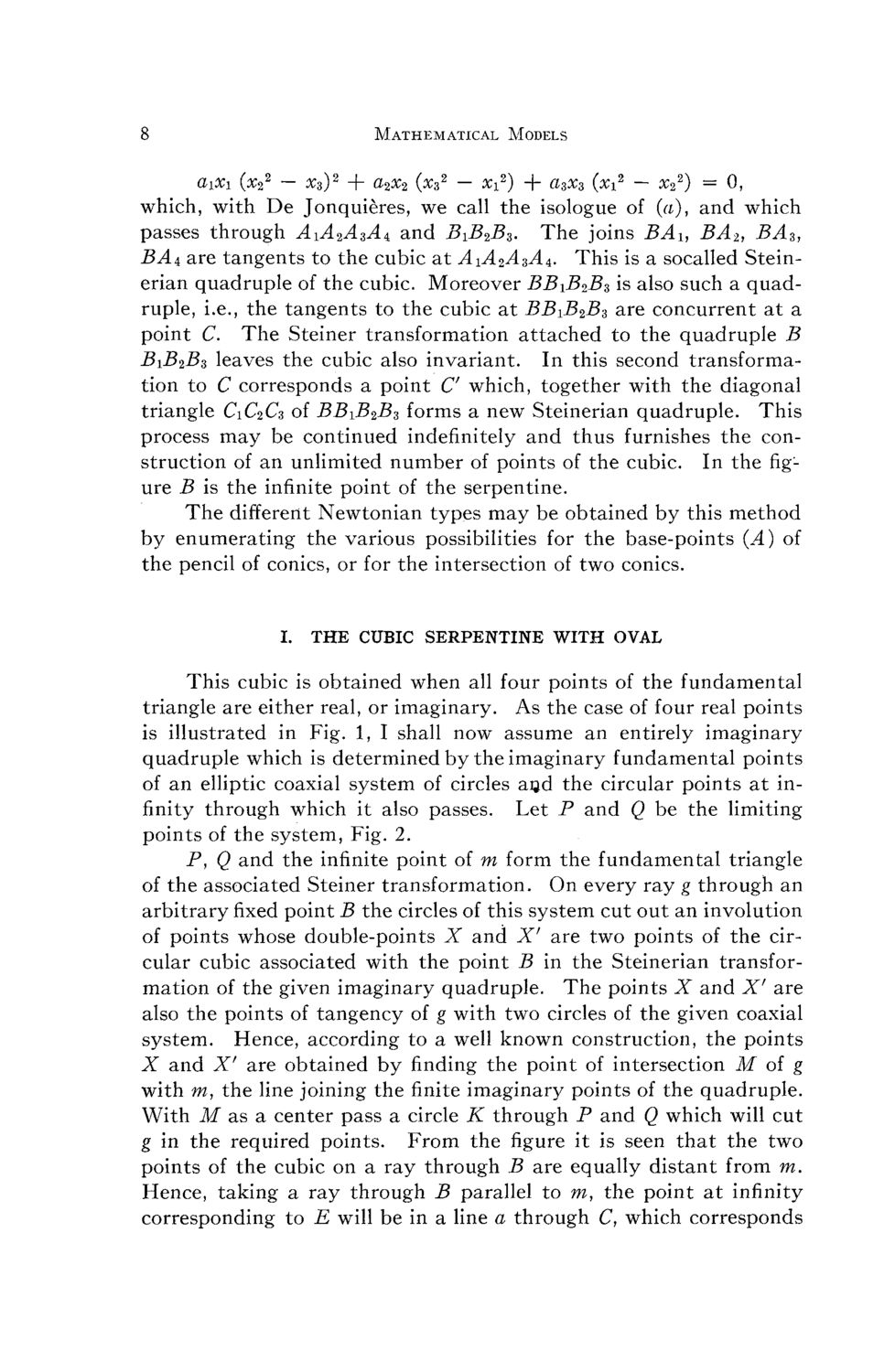| |
| |
Caption: Mathematical Models by Arnold Emch - Series 4 (1928)
This is a reduced-resolution page image for fast online browsing.

EXTRACTED TEXT FROM PAGE:
8 Mathematical Models c i i (x22 — Xs)2 + a2x2 (xs2 — Xi2) + a3x3 (xx2 — x22) = 0, iX which, with D e Jonquieres, we call the isologue of (a), and which passes through AiA2A%A± and BiB2Bz. The joins BAi, BA2, BAS, B A a are tangents to the cubic at AiA2AsA±. This is a socalled Steinerian quadruple of the cubic. Moreover BBiB2Bz is also such a quadruple, i e , the tangents to the cubic at BBiB2B$ are concurrent at a .. point C. The Steiner transformation attached to the quadruple B BiB2Bs leaves the cubic also invariant. In this second transformation to C corresponds a point C which, together with the diagonal triangle C\C2Cz of BBiB2Bs forms a new Steinerian quadruple. This process m a y be continued indefinitely and thus furnishes the construction of an unlimited number of points of the cubic. In the figure B is the infinite point of the serpentine. The different Newtonian types m a y be obtained by this method by enumerating the various possibilities for the base-points ( 4 of .) the pencil of conies, or for the intersection of two conies. I. THE CUBIC SERPENTINE WITH OVAL This cubic is obtained when all four points of the fundamental triangle are either real, or imaginary. As the case of four real points is illustrated in Fig. 1, I shall now assume an entirely imaginary quadruple which is determined by the imaginary fundamental points of an elliptic coaxial system of circles and the circular points at infinity through which i also passes. Let P and Q be the limiting t points of the system, Fig. 2. P, Q and the infinite point of m form the fundamental triangle of the associated Steiner transformation. O n every ray g through an arbitraryfixedpoint B the circles of this system cut out an involution of points whose double-points X and X ' are two points of the circular cubic associated with the point B in the Steinerian transformation of the given imaginary quadruple. The points X and X ' are also the points of tangency of g with two circles of the given coaxial system. Hence, according to a well known construction, the points X and X ' are obtained by finding the point of intersection M of g with m, the line joining thefiniteimaginary points of the quadruple. With M as a center pass a circle K through P and Q which will cut g in the required points. From thefigureit is seen that the two points of the cubic on a ray through B are equally distant from m. Hence, taking a ray through B parallel to m, the point at infinity corresponding to E will be in a line a through C, which corresponds
| |